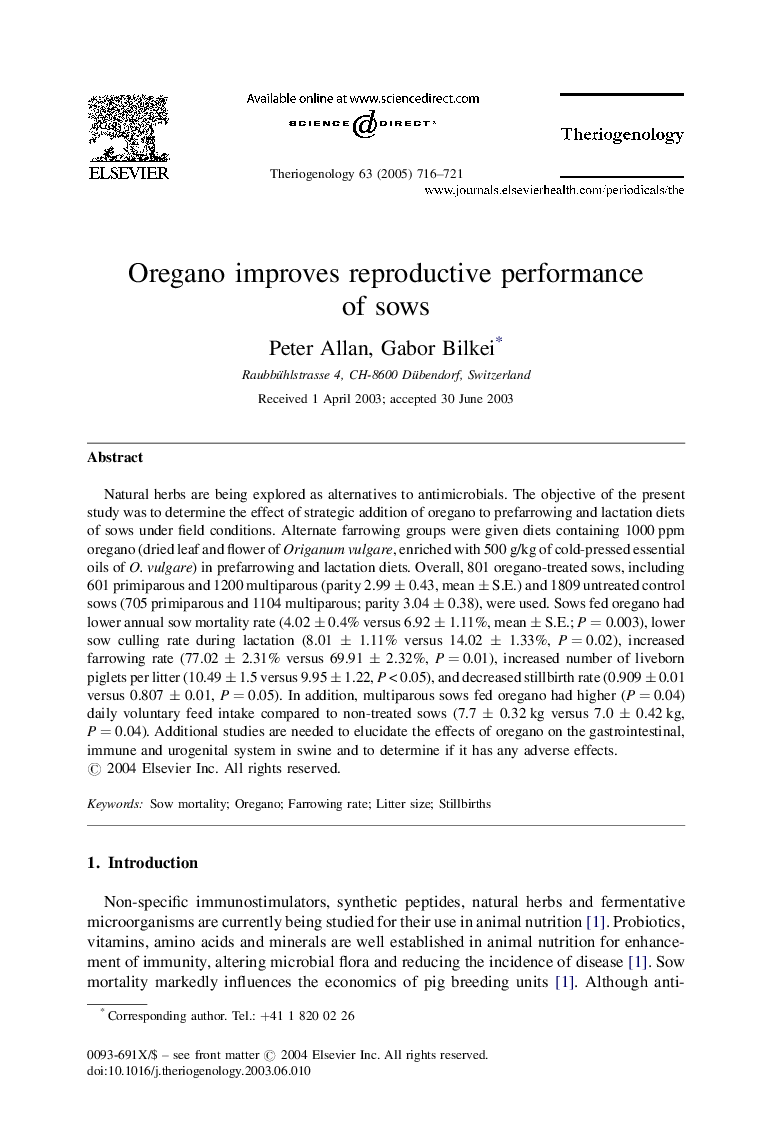| Article ID | Journal | Published Year | Pages | File Type |
|---|---|---|---|---|
| 10894585 | Theriogenology | 2005 | 6 Pages |
Abstract
Natural herbs are being explored as alternatives to antimicrobials. The objective of the present study was to determine the effect of strategic addition of oregano to prefarrowing and lactation diets of sows under field conditions. Alternate farrowing groups were given diets containing 1000 ppm oregano (dried leaf and flower of Origanum vulgare, enriched with 500 g/kg of cold-pressed essential oils of O. vulgare) in prefarrowing and lactation diets. Overall, 801 oregano-treated sows, including 601 primiparous and 1200 multiparous (parity 2.99 ± 0.43, mean ± S.E.) and 1809 untreated control sows (705 primiparous and 1104 multiparous; parity 3.04 ± 0.38), were used. Sows fed oregano had lower annual sow mortality rate (4.02 ± 0.4% versus 6.92 ± 1.11%, mean ± S.E.; P = 0.003), lower sow culling rate during lactation (8.01 ± 1.11% versus 14.02 ± 1.33%, P = 0.02), increased farrowing rate (77.02 ± 2.31% versus 69.91 ± 2.32%, P = 0.01), increased number of liveborn piglets per litter (10.49 ± 1.5 versus 9.95 ± 1.22, P < 0.05), and decreased stillbirth rate (0.909 ± 0.01 versus 0.807 ± 0.01, P = 0.05). In addition, multiparous sows fed oregano had higher (P = 0.04) daily voluntary feed intake compared to non-treated sows (7.7 ± 0.32 kg versus 7.0 ± 0.42 kg, P = 0.04). Additional studies are needed to elucidate the effects of oregano on the gastrointestinal, immune and urogenital system in swine and to determine if it has any adverse effects.
Related Topics
Life Sciences
Agricultural and Biological Sciences
Animal Science and Zoology
Authors
Peter Allan, Gabor Bilkei,
